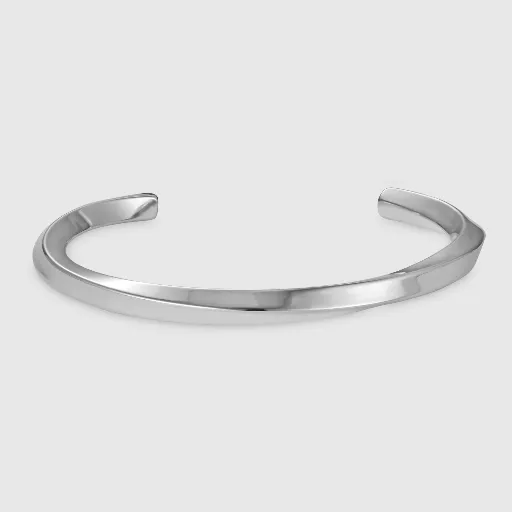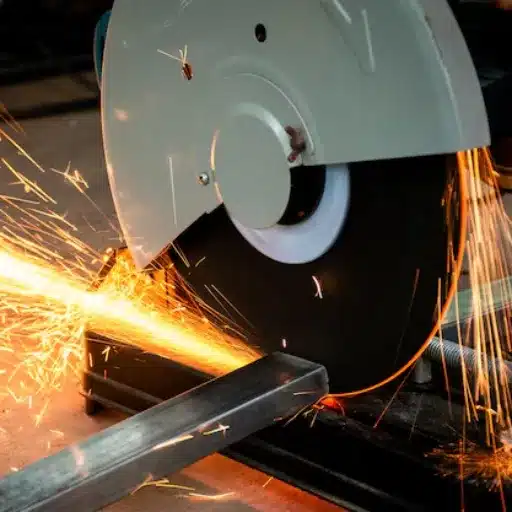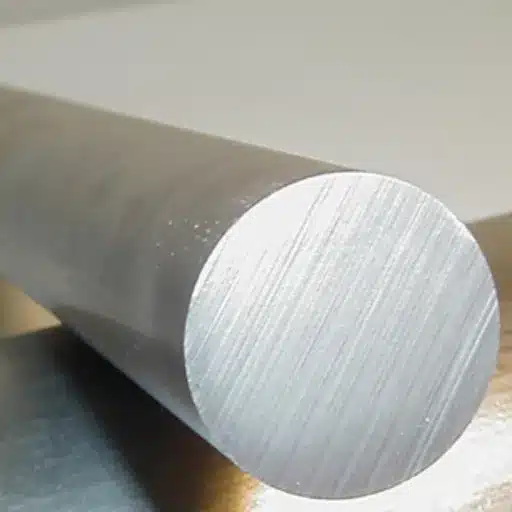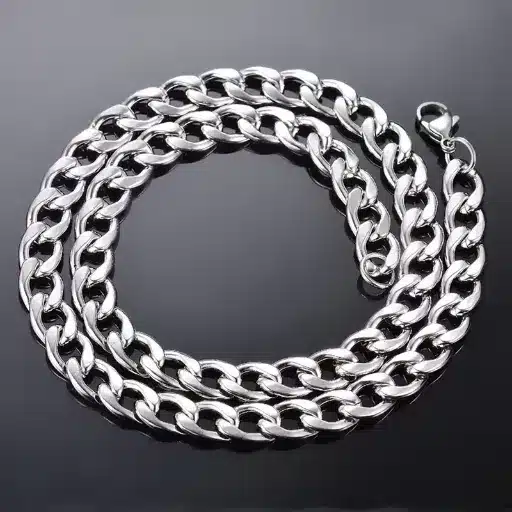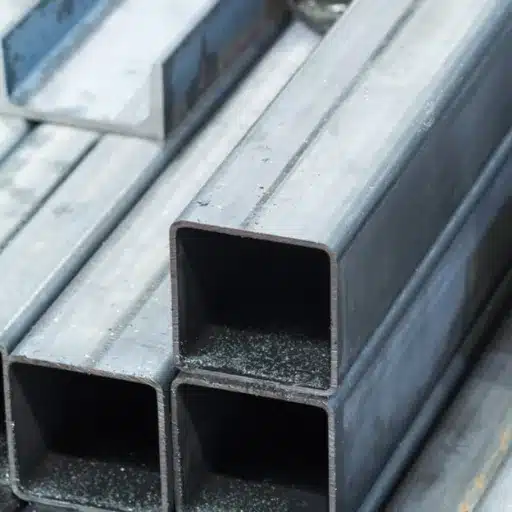Many purchases of flatware and kitchen cutlery involve seeing numbers like 18/0 and 18/10, but what do those numbers exactly refer to? It can be affirmed that such numbers help to distinguish the average quality, resistance, and appearance of one’s flatware. Experienced professionals who are involved in equipping a private house or restaurant with tableware or those simply curious about the subject will be able to explain what such grades mean in terms of benefits and drawbacks when choosing knives or spoons. In this piece, detailed information on 18/0 stainless steel and 18/10 stainless steel will be provided, along with an explanation of how these materials are convenient in various practical situations. By reading this article, you will gain insight into which option would be best suited in any given situation.
Introduction to Stainless Steel and Its Grades
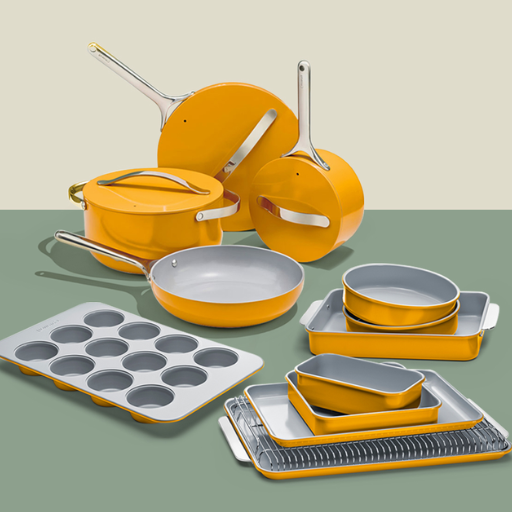
If you look around the kitchen, you will find that many implements that help us make cooking easier and cleaner are made of stainless steel. But this is not by coincidence. Stainless steel is highly sought after for several reasons, primarily due to its durability and anti-corrosive properties. However, the type of steel used is defined by its grade and the respective chromium content in its chemical composition. In some higher-grade steels, nickel is also present. Chromium is responsible for the rust and stain-free steel, while nickel is present for the hardening and gleaming finish.
The most common grades in the market are 18/0 and 18/10, with the numbers indicating the percentage content of chromium and nickel, respectively. The 18/0 stainless steel has 18% chromium, while the nickel content is zero. Although it is cheap and strong, it still lacks adequate corrosion resistance. The 18/10 stainless steel, however, contains 10% nickel and 18% chromium, which means it offers superior corrosion resistance. It does not look as dull and lasts longer, making it perfect for high-quality dishes.
What is Stainless Steel?
Stainless steel is a practical alloy that consists mainly of iron, chromium, and, in many cases, nickel. It is well recognized due to its anti-rusting properties and non-degradable nature and is widely used in various industries, including buildings, kitchens, and medical devices.
Overview of Stainless Steel Grades
| Category | Key Features | Common Grades | Applications |
|---|---|---|---|
| Austenitic | High corrosion resistance, non-magnetic | 304, 316, 317 | Kitchenware, medical tools, marine uses |
| Ferritic | Cost-effective, magnetic | 409, 430, 434 | Automotive, kitchen utensils, appliances |
| Duplex | High strength, corrosion resistance | 2205, 2507 | Offshore, chemical processing |
| Martensitic | High hardness, moderate corrosion | 410, 420 | Knives, scissors, turbine blades |
| Precipitation Hardening | High strength, heat treatable | 17-4 PH | Aerospace, chemical industries |
Importance of Composition in Stainless Steel
Differences in the composition of stainless steel significantly influence not only its performance and properties but also its adequacy for particular applications. Some of the key components that alter its corrosion resistance, strength, and other features include chromium, nickel, molybdenum, and carbon content.
- Content of Chromium
Chromium is, without doubt, the main constituent of stainless steel responsible for its anti-corrosion property. Under normal conditions, the minimum amount of chromium is 10.5% to allow for the steel surface to be passivated by forming a layer of chromium oxide. Hence, oxygen cannot attack it. The addition of large quantities of chromium, for example, in 304 and 316 grades, inhibits the formation of rust and allows the use of even aggressive substances.
- The Role of Nickel
Nickel is often added to stainless steel to increase its ductility, plasticity, and weldability. For example, certain grades of stainless steel, such as austenitic stainless steels like 304 and 316, contain relatively high levels of nickel (8–10%), which enhances their properties in terms of non–magnetism, strength, durability, and the ability to withstand harsh conditions.
- The Role of Molybdenum
Molybdenum is a substantial constituent, too, especially in marine-type stainless steel, known as 316, which contains approximately 2% molybdenum. This alloy significantly helps safeguard against pitting corrosion induced by the presence of compounds, such as chlorides, found in seawater.
- How Can Carbon be Regulated?
The percentage of carbon in stainless steel has to be functional. Although it can significantly enhance the strength and hardness of the steel, its use also increases the steel’s susceptibility to corrosion. There are other redactional unities of stainless steel, such as 316L, where ‘L’ indicates low carbon so that corrosion resistance is not compromised even upon welding as carbides are prevented from forming.
- Selected Elements and High-Performance Alloys
Certain grades may include elements such as manganese, nitrogen, and titanium to achieve specific purposes. An example is nitrogen, which helps reinforce the mechanical strength, and titanium, which helps prevent erosion through intergranular corrosion of the alloy.
Data on Stainless Steel Grades
- 304 Steel: Has 18% to 20% of chromium and 8% to 10.5% of nickel. It is primarily used in kitchen utensils, food processing devices, and containers for chemicals. Its corrosion resistance properties are excellent in soft surroundings.
- 316 Steel: Comprising 16% – 18% chromium, 10% – 14% nickel, and 2% – 3% molybdenum, it is used in areas such as the marine and restricted environments containing series 348 enclosed spaces due to the resistance it offers to chloride corrosion.
- 430 Steel (ferritic): Contains 16% – 18% of chromium while more than a mere trace of nickel is hard to find in its composition, thus making a more economical option versus 18 0 vs 18 10 steels but less resistant to corrosion than 304 or 316 steels.
Carefully optimized proportioning of elements appropriate to each industry ensures that all purposes for stainless steel encompass a wide range of interests, from medicine to building. Changes in the constitution are made when manufacturers consider the need for a material that cannot be easily damaged, has excellent resistance against rust, and is adaptable to many harsh environments.
Comparing 18 0 and 18 10 Stainless Steel
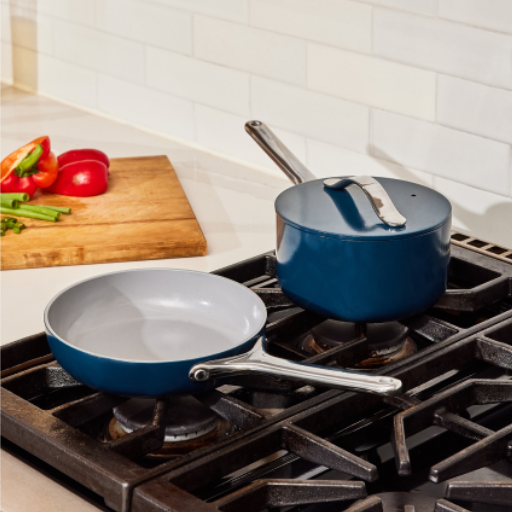
| Parameter | 18/0 Stainless Steel | 18/10 Stainless Steel |
|---|---|---|
| Chromium Content | 18% | 18% |
| Nickel Content | 0% | 10% |
| Corrosion Resistance | Low | High |
| Shine/Luster | Dull | Brilliant |
| Magnetic Properties | Magnetic | Non-magnetic |
| Durability | Less durable | Highly durable |
| Cost | Economical | Expensive |
| Applications | Everyday flatware, budget utensils | Premium flatware, cookware |
| Heat Resistance | Low | High |
| Suitability for Saline Environments | Not suitable | Suitable |
Composition Differences: Nickel and Chromium Content
A significant variation standing between 18 0 vs 18 10 stainless steel is the amount in which nickel and chromium percentages differ for each. This is as pointed out in the following content:
- Cr – chromium
- 18/0 stainless steel contains about 18% chromium, which gives it an excellent ability to withstand rust and gilding, but it lacks nickel.
- 18/10 stainless steel also contains 18% chromium, which provides the same properties but with enhanced resistance due to the presence of nickel.
- Ni – nickel
- Nickel is missing in 18/0 stainless steel, which makes it somewhat low in corrosion resistance and gloss as well.
- 18/10 stainless steel has a ten percent nickel content and thus exhibits considerable strength and shine, while also resisting tarnish over time.
- Strength
- As already explained above regarding cases such as 18/0, where no nickel component is present, it means that the products are not as enduring as their nickel alloy counterparts.
- Most of such items contain nickel under the assumed 18/10 nomenclature, broadening the protrusions of the respective material and enhancing its usability.
- Price
- One can reasonably say that 18/0 stainless steel is cheaper because it does not contain nickel and can be used in homes while cutting back on costs.
- Stainless steel made in the so-called 18/10 composition is, however, used in more advanced kitchen applications, but comes along with higher price tags due to the presence of nickel.
- Uses
- While the 18/0 type of stainless steel is primarily used, it tends to be less expensive and is hence recommended for home use, especially for cutlery, utensils, or appliances.
- While 18/10 stainless steel is the preference of the majority of consumers for raising the quality level of kitchens and the manufacture of medical equipment, as it offers more advantageous anti-corrosion properties.
Where such differences in compositions give advantages to both grades, making them tailored for particular and different types of industries and home use.
Durability and Corrosion Resistance
Factors that affect the performance of stainless steel, specifically its durability and corrosion resistance, vary among grades of stainless steel, including 18/0 and 18/10, making them suitable for particular situations. There are five aspects to this:
- Presence of a High Amount of Chromium for Corrosion Control
In the case of the 18/0 and 18/10 stainless grades, the alloy element is chromium, which forms a passive film to eliminate rust. However, 18/10 is much more resistant to corrosion because it is made with a higher amount of chromium and nickel.
- Reinforcement of 18/10 through Nickel Inclusion
Regarding the 18/10 stainless steel, the nickel reinforces and brings all components of the case together, promoting durability even with long-term use, especially under harsh conditions such as frequent washing or immersion in acidic foods.
- Avoiding Pitting Corrosion and Staining
18/10 stainless steel is more resistant to static corrosion and staining than 18/0, which is quite effective in areas with increased moisture or chloride levels.
- Ability to Withstand High Temperatures for a Prolonged Period
The strength of the pieces under study is also higher in 18/10 stainless steel than in 18/0, enabling them to retain their features and appearance while withstanding high-temperature operations such as cooking, thus encouraging their use in professional as well as kitchen utensils.
- Certain Applications and The Magnetic Properties in The Steel
The absence of nickel in the 18/0, as opposed to the 18/10, is capable of rendering it a magnet, which can also be beneficial for specific magnetic applications (i.e., certain appliances). However, it also has lower durability than 18/10 and corrodes during prolonged use.
The above explains the performance and service life of different stainless steel products based on the material’s composition.
Weight and Feel of Flatware
As far as the weight and appeal of the flatware are concerned, I prefer pieces that strike a balance between heftiness and comfort. With heavier flatware, it becomes easier to enjoy the meal, as there is a sense that the flatware is durable and of good quality. Conversely, light flatware may be more convenient to work with in day-to-day activities, particularly for children. Ultimately, it all comes down to what is a fit for one’s taste as well as rational considerations.
Applications of 18 0 and 18 10 Stainless Steel Flatware
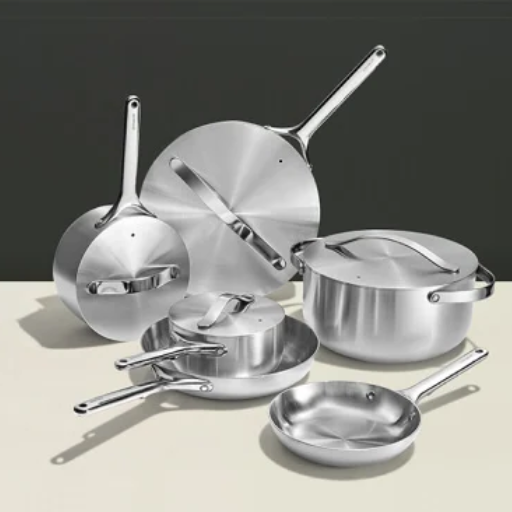
| Parameter | 18/0 Stainless Steel Flatware | 18/10 Stainless Steel Flatware |
|---|---|---|
| Primary Use | Everyday, budget-friendly flatware | Premium, high-end flatware |
| Durability | Moderate, prone to bending | High, resistant to wear |
| Corrosion Resistance | Low, may stain or rust | High, resists rust and corrosion |
| Shine/Luster | Dull, less shiny | Brilliant, long-lasting shine |
| Magnetic Properties | Magnetic, attracted to magnets | Non-magnetic, not attracted to magnets |
| Cost | Economical, affordable | Expensive, luxury |
| Best for | Casual dining, large gatherings | Formal dining, special occasions |
| Heat Resistance | Low, not suitable for high heat | High, withstands high temperatures |
| Suitability for Saline Environments | Not suitable | Suitable for coastal areas |
| Common Applications | Basic utensils, casual table settings | Fine dining, upscale restaurants |
Common Use Cases for 18 0 Flatware
18/0 stainless flatware is one of the most common types found in domestic and commercial environments, primarily owing to its cost-effective nature. They differ from 18/10 flatware in that the former is 18 percent chromium and zero NA = nickel. Additionally, these partial advantages provide functional benefits to the flatware and serve another design purpose: economics. It is frequently used in the following situations with 18/0 flatware:
- Casual Restaurant and Cafeteria Dining
Disposable flatware is a preferred option for many casual dining restaurants and cafeterias also due to its cost. As much as the inclusion of nickel enhances the resistance of the 18/10 flatware, nickel-free flatware still performs satisfactorily for serving ware and will work for high-turnover fields.
- Bulk Catering Purposes or Functions
Many event planners and caterers, such as wedding planners, party planners, or event coordinators, often opt for 18/0 flatware for obvious reasons, or at least they think so. In the case of flatware purchased in multiples, the cost per unit is significantly reduced; hence, the purchase is more economical, particularly if the quality serves its purpose–namely, the satisfaction of the diners.
- Schools and Other Institutions
Institutional facilities, such as educational institutions, medical facilities, and other organizations, utilize 18/0 flatware in their food distribution. Since the tableware is low-cost and does the job, such cutlery finds appropriate application in institutions that serve hundreds or thousands of meals a day.
- Domestic or Consumptive Use
Use of 18/0 flatware is widespread in the family setup where the family wants to cut on expenses on kitchen items, but also with functional items. It is ideal for households in need of flatware for everyday use that can last longer than usual without going above the family’s budget.
- Simple Cutlery and Self Service
The market, in some cases, positions 18/0 flatware as a quasi-disposable, if not disposable, one for applications where table service relief is most often relied on – change of disposable tableware.
Data and Insights on 18 0 Flatware Usage
As per the data available in the market, the market for 18/0 stainless steel flatware is considered as one of the most affordable ones, both for household as well as industrial uses. The stainless steel flatware market is expected to grow steadily at a compound annual growth rate (CAGR) of 4% to 5% globally from 2023 to 2030, primarily driven by the increasing demand for stainless steel flatware, whether domestically or commercially. Typically, this market is driven by demand from budget-end customers and institutions, which offer some cost benefits in using 18/0 flatware.
Even though it doesn’t allow rust and glisten like 18/10, 18/0 decreases the cost of high-demand products. There is a way to make its durability lift further in regard of use in high-turnover places; and that is;-consumers should make sure that it is dryper wash.
Best Uses for 18/10 Stainless Steel Cutlery
18/10 stainless steel cutlery is renowned for its shine, resistance to corrosion, and durability, making it suitable for a wide range of purposes. Here is a list of five best usages for such class of flatware as:
Fancy Restaurants
Cutlery of good quality and elegant design remains most en vogue in good restaurants. It has a lustrous finish and feels heavy, adding a touch of style to the experience.
Halls and Catering
It is good to have parties such as weddings, company banquets, campaigns – anything that requires catering out of big halls with 18/10 stainless steel cutlery on the table. This is also the reason these pieces resist degradation over time, a crucial feature.
Hospitality Industry
Especially those expensive resorts and hotels where the provision of buffets and room service involves the extended use of plates… Shining plates will always consist of 18/10 flatware.
Discerning Hosts
Home dinner hosts wanting good-looking plates will often buy 18/10 cutlery. Due to its classic look and strength, it is a perfect addition to the table, as it may look great but still serves a purpose.
Profiling Food Spaces
18/10 stainless steel cutlery features a handle design that allows chefs to use it on dining tables and for their desserts, depending on the requirement. The highly polished surfaces of the utensils also enhance high culinary skills, complemented by matching stylish cutlery.
Industry-Specific Insights on Flatware Choices
When selecting flatware patterns, Aesthetics, Durability, and Functionality are top on my list. Stainless steel 13/18 0 vs. 18 10 is my tool of choice for today’s finest establishments, including Bistros and gourmet restaurants. With a beautiful, smooth coating devoid of rust and moisture blemishes, one can be assured of a long, useful life alongside an exquisite meal.
Benefits and Drawbacks of Each Grade
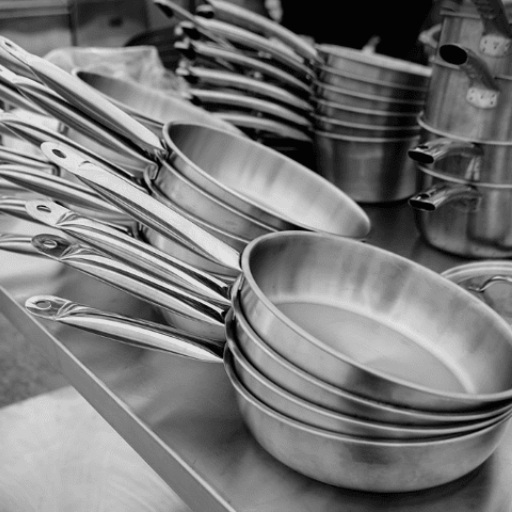
| Parameter | 18/0 Stainless Steel Flatware | 18/10 Stainless Steel Flatware |
|---|---|---|
| Benefits | Economical, magnetic, lightweight | Durable, rust-resistant, brilliant shine |
| Corrosion Resistance | Low, may rust over time | High, resists rust and corrosion |
| Shine/Luster | Dull, less shiny | Brilliant, long-lasting shine |
| Durability | Moderate, prone to bending | High, withstands wear and tear |
| Heat Resistance | Low, not suitable for high heat | High, withstands high temperatures |
| Cost | Affordable, budget-friendly | Expensive, premium quality |
| Magnetic Properties | Magnetic, attracted to magnets | Non-magnetic, not attracted to magnets |
| Suitability for Saline Environments | Not suitable | Suitable for coastal areas |
| Drawbacks | Prone to rust, less durable | Higher cost, heavier weight |
Advantages of 18 0 Stainless Steel
Affordability
While the 18 0 vs 18 10 stainless steel law also holds, the former is exceptionally cheap, hence it finds use in making cutlery in bulk and subsequent sale to conmen joints or clasps.
Magnetic Properties
Because it contains no nickel, it allows magnets to be attracted to it. This makes it possible to use magnetic cutlery retrievers with 18/0 stainless steel, an advantage that is crucial in restaurants and busy kitchens in curtailing losses through inappropriate disposal.
Ease of Maintenance
18/0 stainless steel does not have nickel, which makes it less susceptible to staining and tarnishing. As such, one can keep such stainless steel cleaner for longer.
Non-Allergenic
In addition, nickel is not available in 18/0 stainless steel, making it a healthier alternative for consumers with nickel allergies; thus, one can cater to a broader range of consumers.
Lightweight Design
Because items made with 18/0 stainless steel are typically lighter in weight, they are also suitable for more relaxed or buffet-style services or events with large attendance, making them easier to handle.
Benefits of Choosing 18 10 Stainless Steel
Improved resistance to rusting
The 18/10 stainless steel has a composition of eighteen percent chromium and ten percent nickel, which ensures enhanced protection to corrosion and rusting properties. This material is highly recommended for its exceptional strength retention over extended periods, particularly in moist environments.
Highly Polished and Shiny
The nickel composition helps maintain a high-end, lustrous, and glossy finish of the material over an extended period. For this reason, it is particularly suitable for fine dining and advanced service sectors, where appearance is a key concern.
Great Strength and Longevity
The properties of the 18/10 stainless steel, including strength and durability, explain why the material does not easily bend, disfigure, or cut. It is permitted to use its contents, even for daily purposes.
Non-Reactive Aspect
Owing to its rich nickel content, 18/10 stainless steel does not corrode when used with foods that are acidic or alkaline, thereby maintaining the flavor and structure of the food during the preparation stage. It is elegant as well as safe for use with hammers and squaring tools.
Hefty, Quality, and Fit
One has the impression that 18/10 stainless steel has a luxurious and high-quality feel due to its weight. Such metallic feel thus improves dinner plate sharing etiquettes thanks partly to artisanship and grace.
Drawbacks to Consider for Both Grades
| Parameter | 18/0 Stainless Steel | 18/10 Stainless Steel |
|---|---|---|
| Corrosion Resistance | Low, prone to rust | None in most environments |
| Shine/Luster | Dull, loses shine over time | Requires polishing to maintain shine |
| Durability | Prone to bending and wear | Heavier, may feel bulky |
| Cost | Low quality, less durable | Expensive, higher upfront cost |
| Magnetic Properties | Magnetic, may not suit all preferences | Non-magnetic, less versatile |
| Suitability for Saline Environments | Not suitable | Limited to high-saline environments |
| Heat Resistance | Low, deforms under high heat | None, but the higher cost for cookware |
| Applications | Limited to casual use | Overkill for basic needs |
Buying Guide: How to Choose Between 18 0 and 18 10
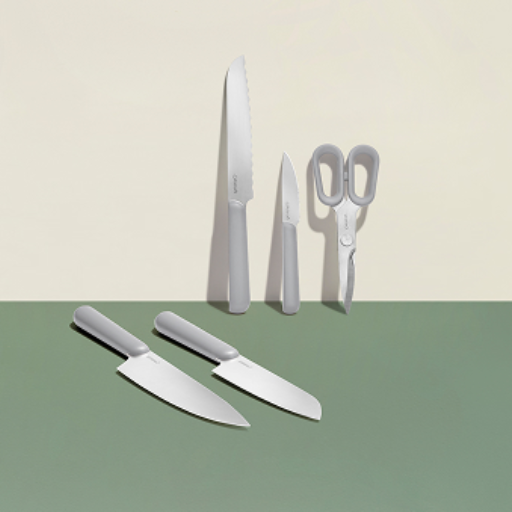
18 0 vs 18 10 steel. I am where I am because of my priorities and also the intended use of the cutlery. If I have been keen on avoiding strength, corrosion, and rust, I would prefer 18/10 because of its higher nickel content, in addition to the quality it offers. If I’m looking to save cost or if I need something magnetized for cooking over an induction cooker, then 18/0 would be the appropriate choice. Ultimately, it’s about how to utilize and conserve evolution.
Factors to Consider When Purchasing Stainless Steel Flatware
When purchasing stainless steel flatware, several factors should be considered to ensure you receive good performance and value for your money. Consider the following critical issues, along with the latest food trends:
- Material Composition,
Stainless steel flatware is typically marked by a ratio of numbers such as 18/10, 18/8 or even 18/0. These numbers indicate the chromium and nickel content in various grades of stainless steel.
- The 18/10 Stainless Steel flatware is widely preferred due to its 10% increase in nickel content, which enhances rust resistance, strength, and polish. It is used for such cutlery, which is long-lasting and of superior beauty.
- 18/0 Stainless Steel, which is cheapest as it does not contain nickel unlike the other two, in other words this is not a high nickel stainless grade. While being easy to handle and not prone to corrosion, unlike other nickel-based grades, it is induction-compatible due to its magnetic properties, allowing it to work with induction-compatible cooking pots.
Very recently, Italians have reported that high-priced flatware, at the top of the market, is ‘18/10’ stainless steel, whereas ’18/0′ is for low-end and practical everyday use.
- Weight and Balance
The weight of flatware significantly influences the eating experience. As a general rule, thicker pieces appear to be more expensive, and they also enhance the balance, making them easier to handle. Lighter flatware, however easy it is to use, may seem a bit lacking. That is why it is advisable to check the weight of the flatware in your hand before buying such pieces.
- Finish and Pattern
The surface finishes vary and can range from a mirror finish, also referred to as a high shine, to a satin finish, which is flat-looking. Mirrors are associated with elegant dining and show-off fingerprint mirrors. Satins are easier and more likely to be used regularly. There is also the factor of design, which falls into the classical and modern categories. One can also consider the design of the cutlery in the table setting, as well as personal taste and preference.
- Durability and Care Less
The 18/10 flatware, however, has a higher nickel content, which may make it more resistant to corrosion when subjected to repeated washing in dishwashers. Given the findings of this research, it is worth noting that some cheaper 18/0 flatware may become less smooth upon prolonged exposure to detergents. Where longevity is more important to you, it is advisable to opt for thicker stainless steel and take precautions.
- Affordability and Efficiency
The cost of stainless steel flatware sets can vary significantly depending on the quality of the material used and the embellishments included in the design. For example, survey respondents have recently found a typical 18/10 twenty-piece set that ranges from 40 to 120, and 18/0 sets that range from 10 to 30. Set your limit, but also keep in mind that you may end up saving costs in the long run by buying good-quality flatware instead of constantly replacing the cheap ones.
Therefore, by outlining these Points, such as Material Type, Weight, Style, Care, and Cost, one can choose the right stainless steel flatware for their outfit.
Key Features of High-Quality Cutlery
Material – Composition, Structure, and Characteristics
The most common standard for quality cutlery is 18/0 vs. 18/10 stainless steel (18 % chromium and 10 % nickel, respectively). This blend is responsible for the strength of the blades, the premium feel of the polish, and rust-free terror.
Weight & Balance
The ideal cutlery set would be hefty to prove it is full and not empty, and also would have hand baggage to enjoy food activities for customers and the likes.
Ergonomics
The crafting of high-end implement tables also pays heed to the user’s comfort; therefore, utensils possess fine handles and smooth curves, all in an attempt to fit any modern or vintage table.
Strength and Care
Ordinary use and constant cleaning are taken care of in quality cutlery tools. They are long-lasting and do not deform, resistant to bending, scratching, or rust, and are usually dishwasher safe.
Workmanship, Detailing, Finishing
Seamless integrations, engraving, and a beautiful polished surface are distinguishable features of quality cutlery. This is the result of a high level of craft and elegance combined with a high level of utility.
Actionable Takeaways for Consumers
- Pick Wisely
For the best outcome in terms of durability, rust resistance, and, of course, aesthetics, it is wise to go for stainless steel over other materials. Stainless steels, such as those made of 18/10, contain 18% chromium and 10% nickel and are known for their good finish and durability. In contrast, such a material composition presentation offers better prospects than the lesser tables.
- This is both an Ergonomics and a Balance Check. Introduce Cutlery to the styles of Cauldwell.
When choosing cutlery, opt for items that feel comfortable to hold, are well-made, and fit your palms well. Heavier pieces denote higher quality, for example, when it comes to knives heavy ones are the best as long as they are not awkwardly heavy. Doing so will help improve both performance and the enjoyment of dinner.
- Learn More About Popular Brands and Their Feedbacks Get Why Zwilling, Oneida Is So Popular
Zwilling cuts, all those brands have continually been positively assessed for producing stylish cutlery, based on trends researched in kitchenware industry polls and changes present in this market. To get the best, affordable, and efficient reviews and expert advice, they will always guide you.
- Diehards want a solution for the maintenance aspect.
People are becoming busier and would prefer cutlery that they can pop in the dishwasher without any problem after meals. This makes cleaning easier, however most of the time it is advisable to hand wash even those that are tagged as dishwasher safe to maintain that shine for a longer time. Overlook for those labeled components for familiar ease of use.
- Ensure the individual costs of pieces compared to complete sets.
It is much cheaper to buy complete Sets than to acquire individual parts. For instance, some sets feature very peculiar utensils, such as butter knives or steak knives, which are particularly useful in various meal combinations one may have at home. According to online research, a 20-piece set of cutlery for four people ranges, on average, between $50 and $ 200, depending on the price of materials.
If these aspects are considered in advance, shopping for functional cutlery will be less challenging and more worthwhile both in terms of the experience and the cost.
References
- The oxidation of an 18/8 type stainless steel in CO2
- Source: Wiley Online Library
- Link to article
- The determination of the gradient and thermal stresses for the heating of type 18-10 stainless steel ingots
- Source: Journal of Engineering Studies and Research
- Link to article
- Corrosion behavior of 18/8 stainless steel and nickel-plated low carbon steel in cassava fluid
- Source: University of Ibadan Repository
- Link to article
Frequently Asked Questions (FAQ)
What is the difference between 18 0 and 18 10 stainless steel flatware?
The primary difference between 18/0 and 18/10 stainless steel flatware lies in their nickel and chromium content. 18 0 contains 18% chromium and 0% nickel, while 18 10 contains 18% chromium and 10% nickel. The presence of nickel in 18/10 provides better resistance to rust and corrosion, making it a popular choice for high-quality flatware.
What type of stainless steel is used in cutlery sets?
Most high-quality cutlery sets utilize 18/10 or 18/8 stainless steel. These types of stainless steel are favored for their durability, rust resistance, and ability to maintain a silver-like shine. The percentages of chromium and nickel in the alloy contribute to the overall quality and performance of the flatware.
Is stainless steel flatware dishwasher safe?
Yes, most stainless steel flatware, including both 18/0 and 18/10, is dishwasher safe. However, to maintain the best quality and prevent water spots or smudges, it is advisable to place the flatware in a separate basket in the dishwasher and avoid overcrowding.
What are the different grades of stainless steel used in flatware?
There are several grades of stainless steel used in flatware, with 304 and 430 being the most common. Grade 304, often referred to as 18 10 stainless steel, contains 18% chromium and 10% nickel, making it highly resistant to corrosion. In contrast, 430 stainless steel contains only 16% chromium and is often considered a lower quality for cutlery.
Why is nickel content important in stainless steel?
The nickel content in stainless steel is crucial for enhancing its corrosion resistance and overall durability. Higher percentages of nickel, such as in 18 10 stainless steel, contribute to the flatware being more resistant to rust and maintaining its shine over time. Flatware with no nickel, such as 18/0, may be more susceptible to corrosion.
How do I select the highest-quality stainless steel flatware?
When selecting the best quality stainless steel flatware, consider the grade of stainless steel, such as 18/10 or 18/8, as they provide better corrosion resistance. Look for flatware that is heavy in the hand, indicating sturdiness, and check if it is easy to care for, as this will help maintain its appearance over time.
What are the benefits of using stainless steel cutlery?
Stainless steel cutlery offers numerous benefits, including resistance to rust and corrosion, a silver-like shine, and exceptional durability. Stainless steel flatware is also dishwasher-safe and easy to clean, making it a practical choice for both everyday use and special occasions.
Are there different weights of stainless steel flatware?
Yes, stainless steel flatware comes in various weights, including extra-heavy, medium, and economy weights. Extra heavy-weight flatware is typically thicker and stronger, providing a more substantial feel, while economy-weight flatware is lighter and may be more affordable but less durable.

